Product Led Growth (PLG) is accomplished when companies maximize product use to drive acquisition, conversion, retention, and expansion. Product-Led organizations deliver products that take into account and respond to changing consumer requirements. Product Led Growth frameworks can help your business grow without spending ten of thousands of dollars on advertising.
In 2019-20, nearly 21 public-listed companies adopted the product-led growth framework to grow their business. This list includes fast-growing brands like Hubspot, ZenDesk, Wix, Twilio, to mention a few. With the PLG model, brands accelerate the time-to-value for customers to experience the product’s true value. Thereby moving them through the sales funnel faster and improving paid subscriptions.
In the article, we have covered some of the most popular product led growth frameworks leveraged by brands like Instagram, Pinterest, Hubspot, etc. When deployed correctly, these growth frameworks can catalyze the growth of your business and drive disproportionate value.
4 Popular Product Led Growth Frameworks
1. Growth Loops
Growth loops are closed systems where the inputs produce further outputs, which can be reinvested in the input by certain processes. Growth loops are used to create various attributes, like new users, users returned, protection, or performance.
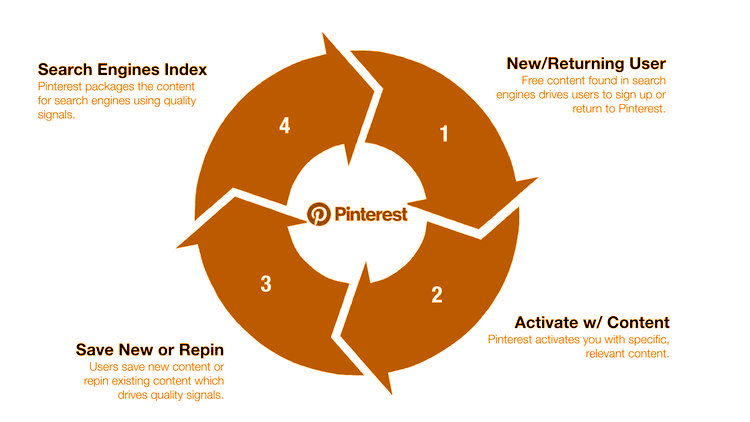
The guiding force behind the growth of Pinterest is:
- Registers (or returns) of the customer
- It allows you to use a particular content on the product
- You save new content or replenish existing content that gives quality signals to Pinterest
- Pinterest distributes search engine premium content
- A user scans the material and registers/returns (see stage 1)
2. The Hook Model
The Hook Model is a four-phase method that companies may use to build goods or services widely used by consumers. The aim is to result in a voluntary, high-frequency commitment. At its heart, the Hook Model is about building a custom for the consumer. It also seeks to connect the issue of the customer to the solution of a business with sufficient frequency to make the commitment a continuous practice.
Entrepreneur, author, and behavioral economist Nir Eyal developed the Hook Model methodology. His approach to product development is based on the formation of habitual habits through a looping cycle consisting of a stimulus, intervention, variable reward, and ongoing investment.
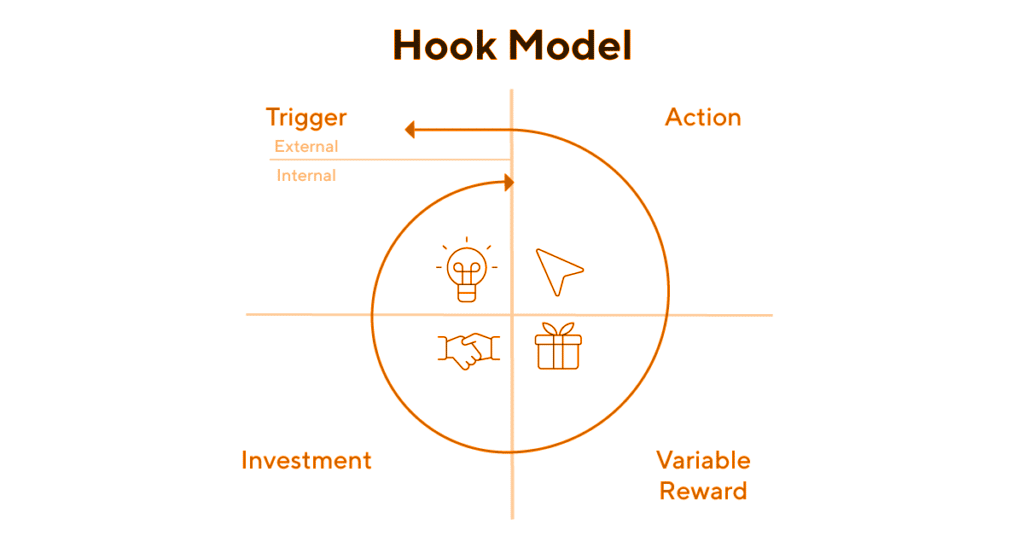
The Hook Model consists of the following stages:
- Trigger (External or Internal): this is the behavioral actuator. It signals the action that builds a habit.
- Action: Actions carried out in expectation of reward.
- Variable Reward: The dilemma that has been addressed as a result of the action taken reinforces the behavioral loop. The reward styles include the rewards of the Tribe (social rewards based on association and acceptance), the rewards of the Hunt (search for material resources), and the rewards of the Self (personal satisfaction in the form of mastery or self-fulfillment).
- Investment: An activity that will develop the product or service in the future.
Instagram’s Hook Model
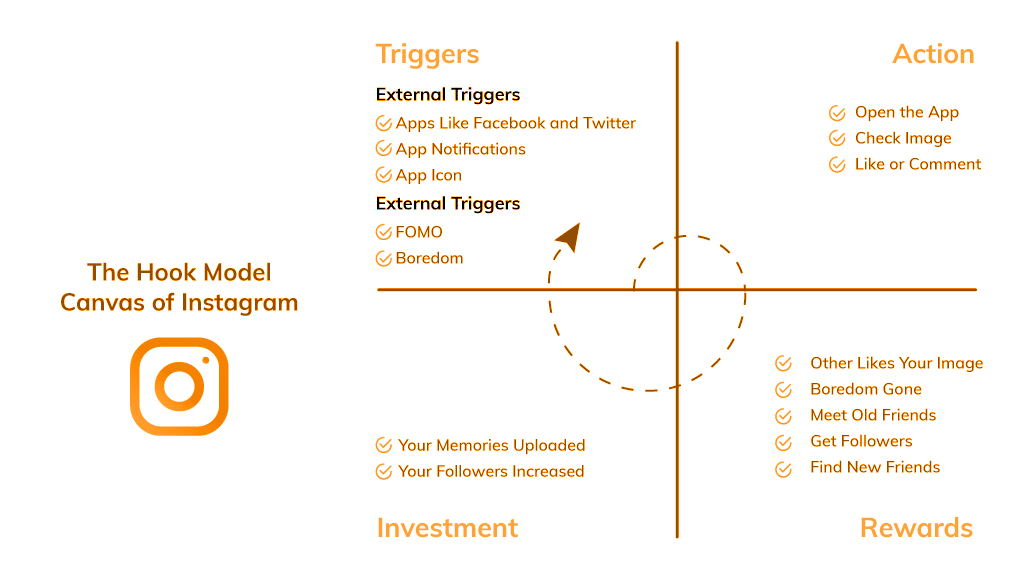
Along with “Rewards” and “Triggers” seen on Facebook, what makes Instagram so compelling is the urge to be like the people we see. We follow the profiles of people who we need to emulate, and then we put our efforts to make them.
The ability to live a delightful Instagram life and share it online with friends is a desire that keeps you clicking and using Instagram a few hours a day.
And along with your friends’ feedback, those carefully clicked and perfectly edited images will become your investment in the app for the future.
3. Fogg Behavior Model
The Fogg Behavior Model shows that three factors must coincide at the same time for behavior to occur: incentive, capacity, and propriety. If there is no action, at least one of these three components is absent.
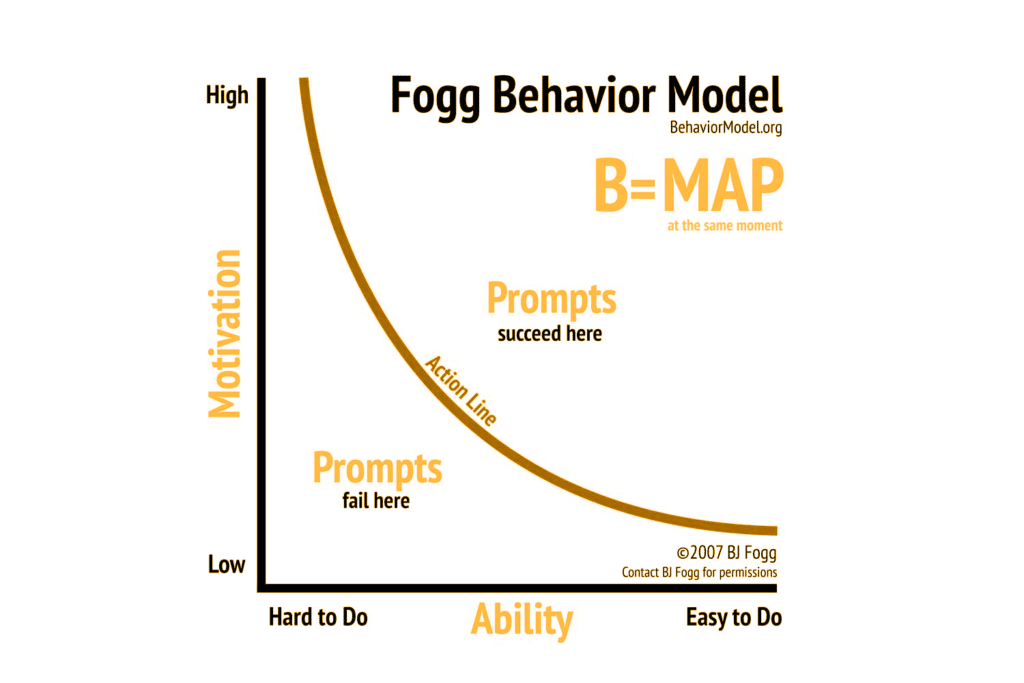
Essentially, the Fogg Behaviour Model notes that behavior can only occur when three components occur simultaneously. These three behavioral shift components are as follows:
- Motivation: People ought to be adequately inspired to improve their actions.
- Ability: They must have the ability to behave.
- Trigger: They’ve got to be stimulated or encouraged to do the behavior.
Behavioral improvement is not out of control. It’s completely within your reach. With BJ Fogg’s Behavior Model as a trusty sidekick, you can create tiny patterns to ensure long-lasting behavioral improvements that turn the company.
All you need to do is note Fogg’s valuable equation: B=MAT. If your learners have the drive and desire to do so, what you need is the right catalyst. Using gamification, epic context, and social learning to improve the enthusiasm of the learners. Then eliminate all obstacles to behavioral transformation, pull the lever, and watch the company turn.
4. RICE Pritoization Model
The RICE Scoring Model is a prioritization system intended to help product managers decide which products, features, and other initiatives are to be included in their roadmaps by scoring certain elements according to four criteria. These elements, which make up the acronym RICE, are reach, impact, confidence, and effort.
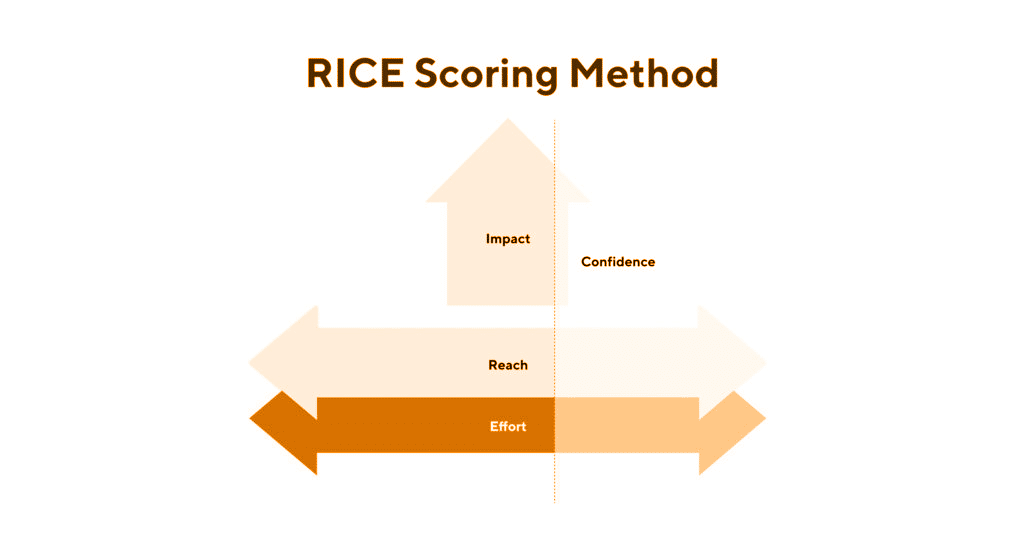
Using a scoring model such as RICE, the product teams will give a three-fold benefit. It will allow product managers to make better-informed decisions, reduce personal bias in decision-making, and help them protect their goals with other stakeholders, such as executive staff.
To use the RICE score model, you test each of your competing ideas (new products, product additions, functions, etc.) by ranking them according to the RICE Prioritization Formula.
- Reach: how many people will be impacted? (Estimation within a given timeframe.)
- Impact: How much will each person be influenced by this? (Massive = 3x, High = 2x, Medium = 1x, Low = 0.5x, Minimum = 0.25x)
- Confidence: how confident are you in your prediction? (High = 100 percent, Medium = 80 percent, Low = 50 percent).)
- Effort: how long “person-months” is this going to take? (Use entire numbers and at least half a month—don’t get into the marijuana estimation.)
The RICE score model will help your product team easily build a clear system for critically determining the relative significance or benefit of a variety of different concept concepts. If you’ve been grappling with other prioritization styles, RICE may be worth a try in your company.
Moving Forward
When brands deploy product led growth frameworks correctly they gain an unfair advantage and experience significantly lower Customer Acquisition Costs (CAC). A good framework will also help in minimizing friction in the user onboarding process which can limit your product’s growth.
But beyond the framework, product led growth is really about understanding your customer’s needs and finding a way to fill those gaps in the market.
